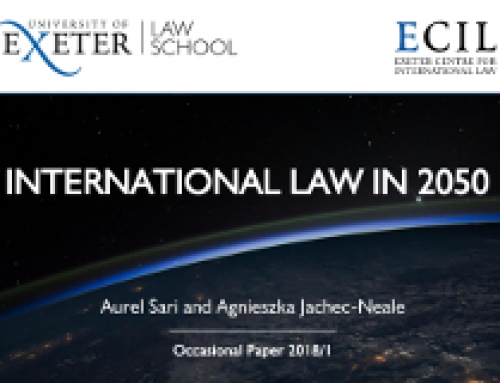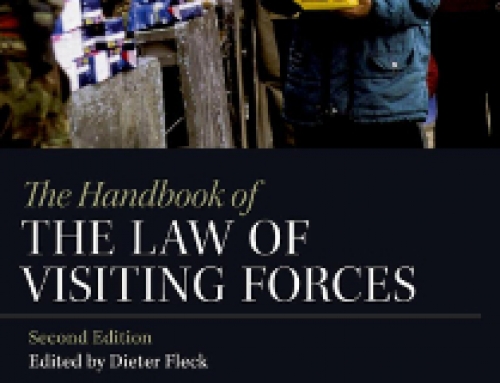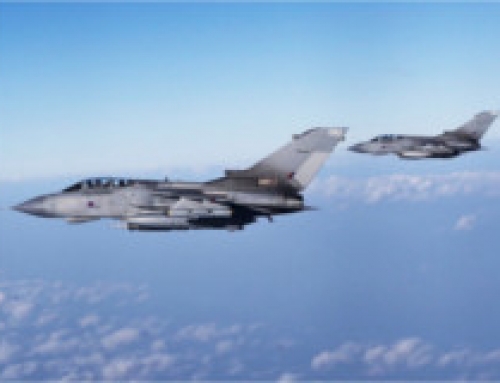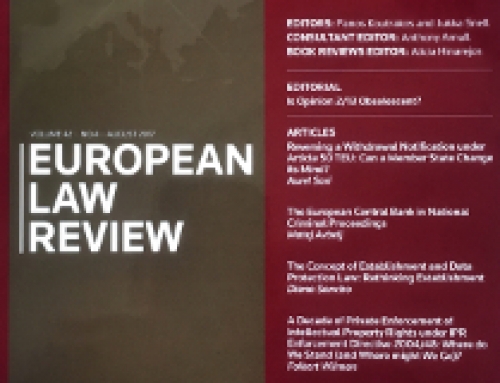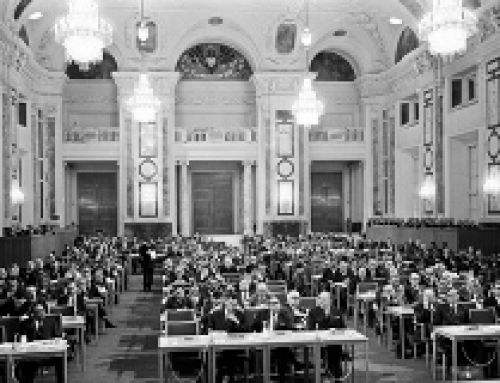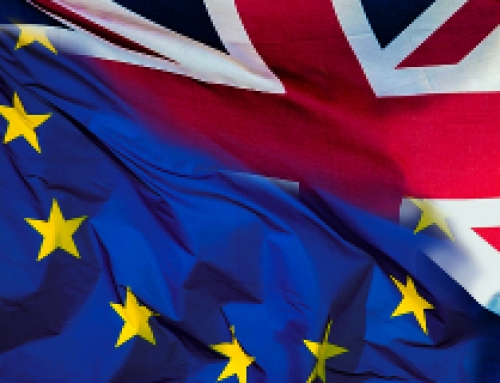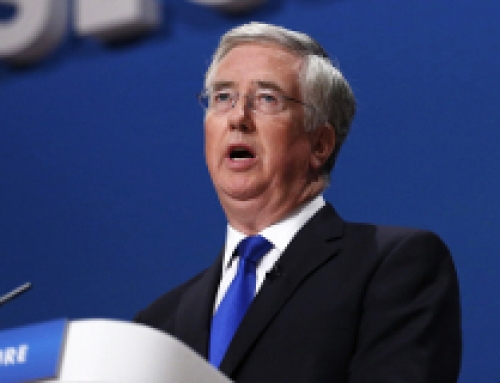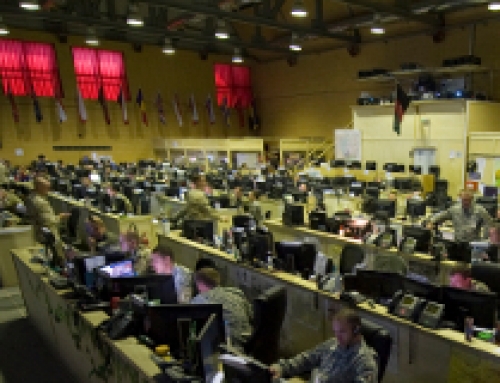Introduction
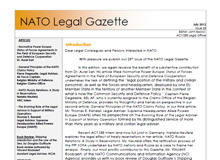
Over the past decade, the European Union has taken a series of steps designed to provide its common foreign and security policy with an operational capability. Cooperating voluntarily, the Member States have agreed to make available to the Union a range of civilian and military assets to be deployed in EU-led crisis management missions, while for its part the EU has equipped itself with dedicated civilian and military organs capable of exercising political control and strategic direction over those assets.1 As a result of these developments, the EU has conducted over two dozen crisis management missions on three continents since 2003.2 While these numbers are impressive, the mandates of EU operations, and consequently their scope and significance, has varied considerably. At the higher end of the spectrum, the Union has conducted a handful of large-scale missions in sometimes challenging political and operational environments, including Operation Althea, the UN-mandated follow-on mission from SFOR in Bosnia and Herzegovina. At the lower end, the EU has carried out a number of assistance and training missions, in particular in the area of the rule of law and security sector reform.
This process of capacity building and growing operational engagement on the ground has gone hand-in-hand with the development of the legal framework necessary to enable the EU to meet its expanded responsibilities. Internally, the Council of the European Union has adopted a range of legal instruments establishing new political and military structures and addressing related institutional matters, such as staffing regulations. Externally, the EU has entered into a substantial number of international agreements with third countries and other international organisations, in particular NATO.3 These have included status of forces agreements concluded with States hosting EU missions in their territory, participation agreements with third States contributing personnel and assets to such missions and agreements regulating the exchange of classified information between the EU and third parties.4 For the EU, the conclusion of these agreements had constitutional implications, as it confirmed, in the opinion of most commentators,5 that the Union possessed treaty-making capacity and therefore international legal personality even before the Treaty of Lisbon conferred this status upon it in express terms. However, the EU’s treaty practice is of wider interest as well, in particular its practice relating to status of forces agreements.
The present contribution aims to provide an overview of the status of forces agreements concluded in the context of European security and defence policy.6 Two types of instruments must be distinguished in this respect: the status of forces agreement concluded among the Member States of the EU in 2003 on the one hand and the agreements concluded by the EU with third States hosting EU crisis management operations on the other hand. Both types of agreements merit attention here and I will deal with them successively.
The EU SOFA: Sleeping Beauty
On 17 November 2003, the Representatives of the Governments of the Member States of the EU signed the EU Status of Forces Agreement, known colloquially as the EU SOFA.7 The purpose of this text is to define the legal position of the military and civilian personnel, as well as the forces and headquarters, deployed by one EU Member State in the territory of another Member State in the context of what is now the Common Security and Defence Policy (CSDP).8
The EU SOFA is for the most part modelled on the relevant provisions of the NATO SOFA of 1951.9 This is not entirely surprising, considering that all of the then fifteen Member States of the EU, except Ireland, were parties to the NATO SOFA or the Partnership for Peace SOFA,10 as were most of the States waiting to be admitted to EU membership in 2004. Whereas the EU SOFA thus shares most of its genes with the NATO SOFA, it departs from its predecessor in several important respects, above all in its scope of application and structure.
In the case of NATO, three different instruments were negotiated to address the legal requirements of three distinct classes of personnel and entities: the NATO SOFA dealing with forces deployed by one NATO country into the territory of another, the Ottawa Agreement regulating the status of NATO as an international organization, national representatives and international staff11 and the Paris Protocol defining the status of NATO’s integrated military headquarters.12 In the EU’s case, the drafters of the EU SOFA interpreted their mandate to require them to accommodate all personnel engaged in EU crisis management activities, whether acting in a national or international capacity, within a single instrument.13 In effect, the EU SOFA thus attempts to combine the diverse objectives and scope of the three NATO instruments in one text.
The EU SOFA achieves this goal by distinguishing between different types of personnel and subjecting them to distinct rules. These rules are arranged into four parts. Part I of the EU SOFA contains provisions of general applicability, such the duty to respect local law or the rules governing the wearing of uniform and the identification of vehicles, which apply to all military and civilian staff covered by the Agreement.14 Part II consists of two articles which apply solely to the military and civilian staff seconded by the Member States to the institutions of the EU.15 The first article deals with the carrying of arms, while the other grants seconded personnel immunity from legal process of any kind in respect of words spoken or written, and of acts performed by them in the exercise of their official functions. Part III applies only to headquarters and forces and to the military and civilian staff working with them.16 This is the most extensive section of the EU SOFA and the one that follows the NATO SOFA most closely. It contains rules relating to the transit and deployment of forces and headquarters; emergency medical care; the availability of buildings, grounds and connected facilities; policing; the carrying of arms; post, telecommunications and travelling facilities; the inviolability of archives and official documents; taxation; criminal jurisdiction and civil jurisdiction and claims. The last two provisions for the most part replicate Articles VII and VIII of the NATO SOFA. Finally, Part IV consists of a sole article setting out the final provisions of the EU SOFA.17
In addition to their distinct scope of application and structure, the two agreements differ in other important respects as well. The EU SOFA reproduces certain provisions of the NATO SOFA subject to significant modifications. For instance, whereas under the NATO SOFA members of a force or a civilian component and their dependents may receive medical and dental care provided that the force’s own facilities are inadequate, under the EU SOFA military and civilian staff shall receive emergency medical and dental care only. A more curious example is the right of foreign forces to police themselves: by changing the original order of words found in the relevant provision of the NATO SOFA, the EU SOFA makes this right dependent upon the agreement of the receiving State. Other provisions are not reproduced at all, including the fair trial guarantees found in Article VII of the NATO SOFA and most of its economic provisions. Both fields are already covered by more specific rules under EU law. Overall, marked and substantial differences therefore exist between the EU SOFA and the NATO SOFA: it would be a mistake to believe that the former merely duplicates the latter.
The conclusion of the EU SOFA represents an important mile-stone in the development of European security and defence policy, for it establishes a legal framework which enables the Member States to temporarily deploy their personnel into each other’s territory on the basis of well-established rules derived from the NATO SOFA. The success of the EU SOFA thus depends on whether the Member States succeeded in addressing the specific requirements of European security and defence cooperation without departing unnecessarily from the spirit and letter of the NATO SOFA. Measured against this standard, the results are mixed.
The EU SOFA does not address the legal status of all categories of military and civilian staff operating in the context of the CSDP. For example, the Agreement applies neither the personnel seconded to ATHENA, the intergovernmental mechanism set up to administer the common costs of EU military operations, nor to the military personnel of the European Defence Agency. More importantly, the application of the EU SOFA is subject to a series of restrictions. The most significant among these is what may be termed the principle of subsidiarity: Parts I and III of the EU SOFA apply to any forces and headquarters, and their personnel, only in so far as their status is not already regulated by another agreement.18 This means not only that any existing agreements, including the NATO SOFA, will supersede the EU SOFA to the extent that they overlap with it, but it also enables two or more Member States to derogate from the EU SOFA by concluding subsequent agreements to this effect. The end result is that the legal status of forces operating in the context of the CSDP is governed by an intricate patchwork of legal instruments rather than a single coherent set of rules.
Nor can the division of the EU SOFA into four parts be described as an unqualified success. Although this division allows different categories of personnel to be governed by distinct rules within the confines of a single text, there are other, less favourable and presumably unintended, consequences of this drafting technique. Whereas the NATO SOFA defines its personal scope of application with reference to the term ‘force’, the EU SOFA relies on the generic concept of ‘military staff’ and ‘civilian staff’ to refer collectively to the different categories of personnel it covers. The use of these generic definitions seems to entitle sending States to exercise their criminal and disciplinary jurisdiction in the territory of the receiving State over personnel belonging to other sending States, at least on a purely textual reading. The use of these generic terms also leads to a remarkably broad definition of a ‘force’. As defined in the EU SOFA, the term ‘force’ is not synonymous with armed force, but has a mixed civilian–military meaning. It may include national contingents as well as multinational military formations. It may even refer to single individuals. Not only does this stretch the concept close to breaking point, but it also complicates the interpretation of the text.
However, for the time being, none of this presents any difficulties in practice. Despite the Member States’ stated intention ‘rapidly to agree among themselves’ on the EU SOFA,19 the Agreement has still not entered into force more than eight years after its adoption.20 This cannot but raise questions about the weight that the Member States attach to it. In the absence of a practical role, the significance of the EU SOFA is therefore of a more abstract nature: its conclusion confirms the NATO SOFA as the appropriate model for the negotiation of multilateral status of forces agreements in the context of structured military cooperation among politically equal partners. Indeed, it is the very success of the NATO SOFA which condemns the EU SOFA to a subsidiary existence.
EU Mission SOFAs: Bucking the Trend
Since the EU SOFA applies solely between the Member States of the EU and only within their territory, the EU has found it necessary to make separate arrangements to regulate the legal position of European military and civilian staff deployed into the territory of third countries. In some cases, the applicability of pre-existing arrangements concluded by the Member States or by third parties was simply extended to EU missions. For example, in the case of Operation Artemis, the EU’s first ever military mission, the Government of Uganda unilaterally extended the application of a bilateral agreement it concluded with France in June 2003 to other contributing States deploying personnel and assets to Uganda, where the forward operating base of the mission was located.21 In the majority of cases, however, the EU has negotiated separate status agreements with third States hosting EU crisis management missions.
In its initial practice, the EU followed the precedent set by the Memorandum of Understanding concluded in 1991 between the European Community and its Member States on the one hand and the Federal Authorities of Yugoslavia and the Republics of Croatia and Slovenia on the other hand in order to define the mandate and status of the European Community Monitoring Mission (ECMM).22 This instrument conferred upon the ECMM’s personnel the privileges and immunities enjoyed by diplomatic agents under the Vienna Convention on Diplomatic Relations of 1961. These status arrangements remained in place when the EU entered into new agreements with the Federal Republic of Yugoslavia, FYROM and Albania following a restructuring of the ECMM in 2000.23 Subsequently, they also served as a model for seven status of forces agreements drawn up between 2003 and 2005.
The conferral of diplomatic status on members of foreign armed forces is not unusual in international law. High-ranking members of peace support operations, such as heads of mission or force commanders, are routinely granted privileges and immunities enjoyed by diplomatic agents, while smaller contingents deployed abroad on short-term advisory or assistance missions sometimes benefit from treatment equivalent to that accorded to administrative and technical staff under the Vienna Convention. However, it is quite exceptional in international practice to confer the full array of diplomatic privileges and immunities on every member of a foreign contingent, especially when the number of troops involved is relatively high. Although no rules of international law prevent the EU from maximising the privileges and immunities of its crisis management missions, such a strategy may nevertheless be perceived as heavy-handed and sits somewhat uncomfortably with the EU’s self-image as a global champion of human rights and the rule of law. In fact, it appears that this strategy has been a source of contention within the EU. In a paper submitted in December 2002, the Danish Presidency of the Council of the EU advised against the wholesale adoption of the status regimes contained in the Vienna Convention on Diplomatic Relations and instead supported a more flexible ‘building-block’ approach whereby the legal position of EU missions would be defined on a case-by-case basis to reflect their specific functions and operational circumstances.24
The experiences gained in the course of the first few EU crisis management missions highlighted the need to streamline the conclusion of status of forces agreements in order to facilitate their early entry into force. In 2005, the Council adopted an EU Model SOFA and an EU Model SOMA to this end.25 In doing so, the Council followed the broad example set by the UN Model SOFA of 1990, which was drawn up to ‘serve as a basis for the drafting of individual agreements to be concluded between the United Nations and countries on whose territory peace-keeping operations are deployed.’26 However, unlike the UN Model SOFA, which also serves as a template in operations where no United Nations military personnel are deployed, the Council decided to deal with military and civilian operations in two separate texts. While military and civilian personnel raise different legal considerations, their circumstances do not differ to such an extent as to make the adoption of two separate texts absolutely necessary. Indeed, the majority of the provisions of the Model SOFA and the Model SOMA are all but identical, especially following their revision in July 2007 and December 2008, respectively, which ironed out a certain inconsistencies between the two instruments.27
The EU Model SOFA and SOMA grant EU crisis management operations a broad range of privileges in the host State. These include privileges commonly found in similar status agreements, such as those relating to the crossing of borders and movement within the territory of the host State, the installation and operation of communication devices and equipment, and the repatriation of deceased personnel and their personal property. Other privileges, such as the right to display the national flags and insignia of their constituent national elements, are less common. Still others are in fact quite remarkable: thus both the EU Model SOFA and SOMA require the host State to provide, free of charge, facilities owned by private legal entities if requested to do so by EU operations for administrative and operational reasons. In addition, EU missions also benefit from immunities similar to those enjoyed by diplomatic missions under the Vienna Convention on Diplomatic Relations. Their facilities, archives and documents and official correspondence are inviolable, their facilities, furnishings and other assets as well as their means of transport are immune from search, requisition, attachment or execution, while the missions themselves, as well as their property and assets, enjoy immunity from every form of legal process and are exempt from national, regional and communal taxes.
Individual members of EU crisis management operations too benefit from extensive privileges and immunities. Most importantly, they are exempt from the criminal jurisdiction of the host State under all circumstances and enjoy immunity from its civil and administrative jurisdiction in respect of words spoken or written and all acts performed by them in the exercise of their official functions. Usefully, the EU model agreements not only reproduce the procedure set out in the UN Model SOFA for determining whether or not an act in question was committed in the performance of their official functions, but they also add a clarification whereby a certification issued by the competent EU authorities to this effect shall be binding on the host State. In addition, members of EU crisis management operations enjoy a range of other privileges and immunities typically granted to foreign personnel in similar circumstances. For instance, they are not liable to any form of arrest or detention and no measures of execution can be taken against them, except in civil proceedings not related to their official functions.
Conclusion
The status of forces agreements concluded in the context of European security and defence cooperation reveal their most interesting facets when viewed against the background of international practice as a whole. On the one hand, they affirm international practice in two important respects. First, the distinct content of the EU SOFA and the EU Model SOFA/SOMA confirms that the legal status of foreign armed forces is not subject to a uniform legal regime under international law, a point I have covered in more detail elsewhere in this issue. Plainly, the concessions that the Member States of the EU were prepared to make to each other in the EU SOFA are not appropriate to govern their relationship with third countries in entirely different operational circumstances. Second, subject to some notable exceptions, the substantive terms of the EU SOFA and the EU Model SOFA/SOMA correspond closely to the terms of comparable agreements, namely the NATO SOFA and the UN Model SOFA. This congruence reflects more than just a lack of imagination on part of those who drafted the EU agreements, but may be understood to confirm the general applicability of the legal arrangements contained in the NATO SOFA and the UN Model SOFA to analogous operational circumstances.
On the other hand, the EU’s continued reliance on the Vienna Convention on Diplomatic Relations for inspiration in defining the legal status of its crisis management missions is at odds with international practice. This merits a few brief observations. First, the question as to whether or not the privileges and immunities laid down in the EU Model SOFA and SOMA exceed what is functionally necessary must be judged in its proper context. The EU Model SOFA and SOMA may not appear particularly excessive when compared to the jurisdictional arrangements annexed to the Military Technical Agreement between ISAF and the Interim Administration of Afghanistan, yet they do appear somewhat over the top when compared to the NATO SOFA. However, these comparisons are of limited value, since the instruments in question were designed to apply in very different environments and for this reason are not functionally equivalent. Status of forces agreements ‘come in a variety of sizes and flavours’,28 as Max Johnson has reminded us, and one should avoid comparing apples and oranges.29 Second, the EU Model SOFA and SOMA raise the question as to whether they reflect a sense of entitlement on part of the EU to benefit from more extensive privileges and immunities as a matter of law or merely as a matter of political concession. In other words, is EU treaty practice motivated by opinio juris or by realpolitik? In the absence of evidence supporting the former conclusion, the latter seems more likely. Third, even if on a strict legal analysis the majority of the privileges and immunities set out in the EU Model SOFA and SOMA do not go markedly beyond those found in the UN Model SOFA, the fact that they echo the language of the Vienna Convention on Diplomatic Relations may create a perception to this effect. Such a perception may be sufficient to call into question their legitimacy in the eyes of host States.
Published in the NATO Legal Gazette (July 2012) Issue 28, 2–12
1According to Article 42 of the Treaty on European Union (Lisbon), the EU may deploy civilian and military assets made available to it ‘on missions outside the Union for peace-keeping, conflict prevention and strengthening international security in accordance with the principles of the United Nations Charter.’
2The European External Action Service maintains an up-to-date list of EU operations on its website. For a detailed review of the main legal aspects of EU operations, see F. Naert, International Law Aspects of the EU’s Security and Defence Policy, with a Particular Focus on the Law of Armed Conflict and Human Rights (2010), at 97–191.
3See M. Reichard, The EU-NATO Relationship: A Legal and Political Perspective (2006).
4For an overview of these different agreements, see A. Sari, ‘The Conclusion of International Agreements by the European Union in the Context of the ESDP’, (2008) 56 ICLQ 53, 55–59.
5E.g. P. Koutrakos, EU International Relations Law (2006), at 409.
6For a more extensive discussion of these issues, see A. Sari, ‘The EU Status of Forces Agreement: Continuity and Change in the Law of Visiting Forces’, (2007) 46 Mil L & L War Rev 9; A. Sari, ‘The EU Status of Forces Agreement (EU SOFA)’, (2008) 13 J Conflict & Sec L 353; A. Sari, ‘Status of Forces and Status of Mission Agreements under the ESDP: The EU’s Evolving Practice’, (2008) 19 EJIL 67.
7Agreement between the Member States of the European Union concerning the status of military and civilian staff seconded to the institutions of the European Union, of the headquarters and forces which may be made available to the European Union in the context of the preparation and execution of the tasks referred to in Article 17(2) of the Treaty on European Union, including exercises, and of the military and civilian staff of the Member States put at the disposal of the European Union to act in this context (EU SOFA), Brussels, 17 November 2003, OJ
8See Articles 42 to 46 of the Treaty on European Union (Lisbon).
9Agreement between the Parties to the North Atlantic Treaty Regarding the Status of Their Forces, London, 19 June 1951, 199 UNTS 68.
10Partnership for Peace Status of Forces Agreement, 19 June 1995, TIAS 12666.
11Agreement on the Status of the North Atlantic Treaty Organization, National Representatives and International Staff, Ottawa, 20 September 1951, 200 UNTS 4.
12Protocol on the Status of International Military Headquarters Set up Pursuant to the North Atlantic Treaty, 28 August 1952, 200 UNTS 340.
13See Council doc. SN 4438/01, 31 October 2001, at para. 9.
14Articles 1 to 6, EU SOFA.
15Articles 7 and 8, EU SOFA.
16Articles 9 to 18, EU SOFA.
17Article 19, EU SOFA.
18Article 19(6)(a), EU SOFA.
19Council Doc. 10188/01, 21 June 2001, at 2.
20As of November 2011, three Member States have not yet notified the Secretary-General of the Council of the European Union of the completion of their constitutional procedures for the approval of the EU SOFA.
21Council doc. 12225/03, 4 September 2004.
22Memorandum of Understanding on the Monitor Mission to Yugoslavia, 13 July 1991 (on file with the author). See D. Lopandic, ‘Les Mémorandums d’Entente: Des Instruments Juridique Spécifiques de la Politique Étrangère et de Sécurité de l’Union Européenne – Le Cas de l’ex-Yugoslavie’, (1995) n° 392 RMCUE 557.
23EU–FRY, 25 April 2001, OJ 2001 L125/2; EU–FYROM, 31 August 2001, OJ 2001 L241/2; EU–Albania, 28 March 2003, OJ 2003 L93/50.
24Council doc. 15711/02, 17 December 2002.
25Council doc. 8720/05, EU Model SOFA, 18 May 2005 and Council doc. 9847/05, EU Model SOMA, 7 June 2005 (both on file with the author).
26UN doc. A/45/594, Model status-of-forces agreement for peace-keeping operations: Report of the Secretary-General, 9 October 1990.
27Council doc. 11894/07, EU Model SOFA, 20 July 2007 and Council doc. 17141/08, EU Model SOMA, 15 December 2008.
28M. S. Johnson, ‘NATO SOFA: Enunciating Customary International Law or Just a Model, and What Does the Future Portend?’, in H. Fischer et al. (eds), Krisensicherung und Humanitärer Schutz – Crisis Management and Humanitarian Protection: Festschrift für Dieter Fleck (2004) 287, at 291.
29This is not always fully appreciated in the present context. Cf. R. Burke, ‘Status of Forces Deployed on UN Peacekeeping Operations: Jurisdictional Immunity’, (2011) 16 J Conflict & Sec L 63.

